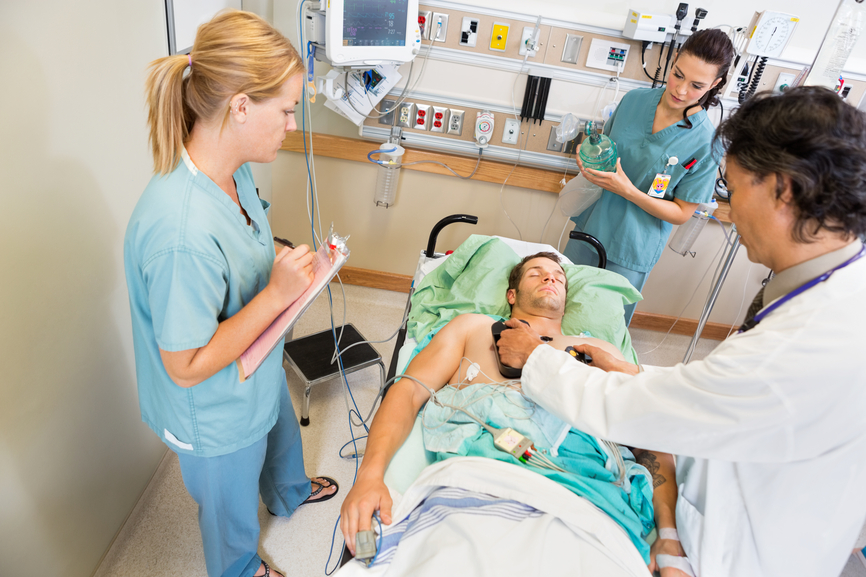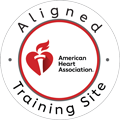The Chain of Survival is a crucial concept in emergency cardiac care, representing the sequence of actions required to improve the chances of survival and recovery in cases of cardiac arrest. Understanding this order is vital for both healthcare professionals and the general public, as it can significantly impact the outcomes of these emergencies. This article aims to provide a comprehensive overview of the Chain of Survival, explaining each link and its importance in the context of cardiac arrest.

What is the Chain of Survival?
The Chain of Survival refers to a series of critical steps that must be taken to ensure the best possible outcomes for individuals experiencing cardiac arrest. This concept was developed by the American Heart Association (AHA) to streamline and emphasize the importance of timely and coordinated efforts in emergencies. The history and development of the Chain of Survival highlight its importance in increasing survival rates and improving post-cardiac arrest outcomes. It has become a cornerstone in the education and training of both medical professionals and laypersons, reinforcing the need for immediate and effective response during cardiac emergencies.
Call Us Now
Get the Best CPR Class in Kansas City Today!
The Links in the Chain of Survival
The Chain of Survival consists of five essential links:
- Recognition of Cardiac Arrest and Activation of the Emergency Response System
- Early Cardiopulmonary Resuscitation (CPR)
- Rapid Defibrillation
- Effective Advanced Life Support and
- Integrated Post-Cardiac Arrest Care
Each link plays a vital role in the overall process of saving lives and ensuring the best possible recovery for patients.
Recognition of Cardiac Arrest and Activation of Emergency Response System
The first link in the Chain of Survival is the Recognition of Cardiac Arrest and Activation of the Emergency Response System. Recognizing the signs and symptoms of cardiac arrest—such as sudden collapse, lack of responsiveness, and absence of normal breathing—is critical. Immediate recognition allows for the quick activation of emergency medical services (EMS) by calling 911 or the local emergency number. This prompt action ensures that professional help is on the way as soon as possible, setting the stage for subsequent life-saving interventions.
Early Cardiopulmonary Resuscitation (CPR)
The second link is Early Cardiopulmonary Resuscitation (CPR). Early CPR, particularly chest compressions, is crucial because it helps maintain blood flow to the brain and vital organs until professional medical help arrives. The basic steps of performing CPR include checking for responsiveness, calling for help, and starting chest compressions at a rate of 100-120 compressions per minute at a depth of about 2 inches for adults. Bystanders who are trained in CPR can make a significant difference, as immediate CPR can double or even triple the chances of survival for someone in cardiac arrest.
Rapid Defibrillation
The third link, Rapid Defibrillation, involves the use of Automated External Defibrillators (AEDs). AEDs are portable devices that can analyze the heart’s rhythm and deliver an electric shock if necessary to restore a normal heart rhythm. Knowing how and when to use an AED is essential, as defibrillation within the first few minutes of cardiac arrest can greatly increase survival rates. The availability and accessibility of AEDs in public places, such as airports, shopping centers, and sports arenas, are critical in ensuring that rapid defibrillation can be performed by laypersons or first responders.
Effective Advanced Life Support
Effective Advanced Life Support (ALS) is the fourth link in the Chain of Survival. ALS includes advanced medical interventions provided by EMS and healthcare professionals, such as airway management, administration of medications, and advanced cardiac monitoring. The role of ALS is to stabilize the patient, address the underlying causes of the cardiac arrest, and prepare for transport to a medical facility for further treatment. The expertise and timely actions of EMS and healthcare professionals are pivotal in this phase.
Integrated Post-Cardiac Arrest Care
The fifth and final link is Integrated Post-Cardiac Arrest Care. This stage involves comprehensive care provided after the initial resuscitation, including therapeutic hypothermia (cooling the body to protect the brain), cardiac catheterization to treat underlying heart conditions, and ongoing monitoring and support in an intensive care unit. Long-term recovery and rehabilitation are also crucial components of post-cardiac arrest care, aiming to improve neurological outcomes and quality of life for survivors.
Why the Order Matters
Understanding the sequential importance of each link in the Chain of Survival is essential because delays or failures in any part of the chain can significantly reduce the chances of survival and recovery. Each link builds on the previous one, creating a continuous and coordinated effort to save lives. Case studies and statistics demonstrate that adherence to the Chain of Survival can lead to markedly better outcomes, highlighting the need for widespread knowledge and implementation of these steps.
Challenges and Solutions
However, there are challenges in implementing the Chain of Survival effectively. Common challenges include lack of public awareness, insufficient training, limited access to AEDs, and delays in EMS response. Potential solutions involve increasing community awareness and education, expanding CPR and AED training programs, ensuring the widespread availability of AEDs, and improving the coordination and response times of emergency services. Community involvement and training are crucial in overcoming these barriers and enhancing the overall effectiveness of the Chain of Survival.
Conclusion
In conclusion, understanding and adhering to the Chain of Survival is crucial in maximizing the chances of survival for cardiac arrest victims. From recognizing the emergency and activating the emergency response system, to early CPR, rapid defibrillation, effective advanced life support, and integrated post-cardiac arrest care, each link is vital. By ensuring that every step is executed promptly and efficiently, we can significantly improve survival rates and outcomes for those experiencing cardiac emergencies.
Now that you know the importance of the Chain of Survival, it’s time to take action. Enroll in CPR certification in Kansas City and be prepared to save lives when it matters most. CPR Kansas City, an American Heart Association training site, offers comprehensive and hands-on courses in BLS for Healthcare Providers, ACLS, PALS, and CPR and First Aid. Whether you’re seeking initial certifications or renewals, CPR Kansas City provides a stress-free learning environment to equip you with the skills you need. Don’t wait—get the best CPR training in Kansas City today!
Ready to make a difference? Sign up for CPR certification in Kansas City with CPR Kansas City and be a part of the life-saving Chain of Survival.


